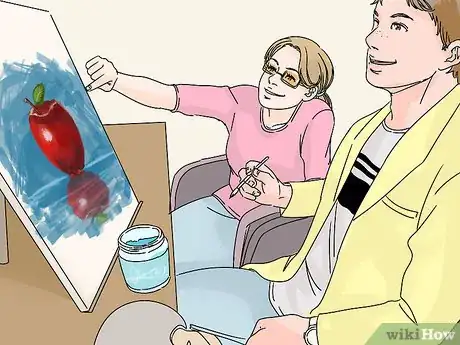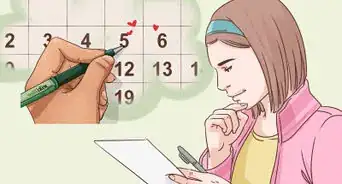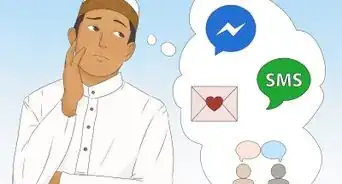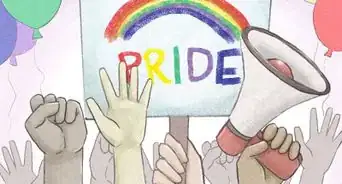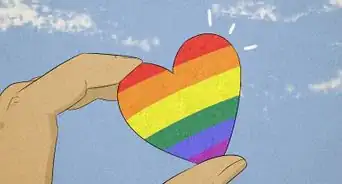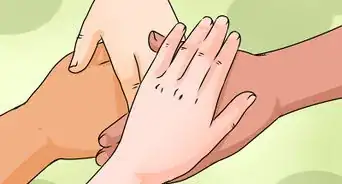wikiHow is a “wiki,” similar to Wikipedia, which means that many of our articles are co-written by multiple authors. To create this article, volunteer authors worked to edit and improve it over time.
There are 10 references cited in this article, which can be found at the bottom of the page.
This article has been viewed 19,767 times.
Learn more...
A pansexual person is attracted to people of all genders, including nonbinary people, cisgender people, and trans people. Maybe you're trying to figure out if you're pansexual, bisexual, or another sexuality. This wikiHow can assist you in determining whether you are pansexual for whatever reason.
Steps
Signs of Being Pansexual
-
1You're attracted to people regardless of gender. You may be pansexual if you are attracted to people of all genders, or if you can develop an attraction to people without knowing their pronouns or gender identity. [5]
- That includes attraction to someone who identifies as cisgender, transgender, bigender, nonbinary, or any other gender.
-
2Other labels, such as "bisexual", don't feel right. If you know you are queer but certain terms don't feel like they define your sexuality, this is another sign you may be pansexual. Bisexuality, in reality, is defined as attraction to two or more genders, and as a result, it can include attraction to just as diverse a group of people as pansexuality.[6]
- It's possible that the term "bisexual" simply does not resonate with you. That might indicate that you're actually pansexual.
-
3The label gives you a good feeling. What matters most in the end is that you are at ease identifying as pansexual. It may take some time or trial and error to determine whether or not this label fits you well, and this is perfectly fine. [7]
Knowing if You're Pansexual
-
1Recognize that you have sexual preferences. It's natural to try to avoid or compensate for your sexual desires; it's also natural to be scared and overwhelmed! You must be vulnerable and honest with yourself in order to move forward. You can work toward self-acceptance once you stop suppressing your sexual preferences and acknowledge that they exist.
Did You Know? Some pansexual folks have a stronger attraction to one gender more than another, but they remain pansexual. For example, someone might be interested in men, women, and nonbinary people but prefer women to men and nonbinary individuals.
-
2Know that anyone can be pansexual. Pansexual people don't all have a specific gender or look. There aren’t hair, makeup, clothing, or style prerequisites for being pansexual — or for any other sexual or romantic orientation.[8]
-
3Ask yourself questions. Asking yourself questions about what you think about yourself or your experiences might help you in identifying yourself and who you are.
- Does your ideal partner have a gender preference?
- Could you see yourself dating anyone, regardless of gender, sexual orientation, or sex?
- Would you date someone who is the same gender as you, the opposite gender (if you identify with a binary gender), or a nonbinary gender?
- Would you be interested in dating someone with a different sexual orientation than you?
-
4Notice common signs. Being attracted to people of all genders, not only men, women, or nonbinary people, is the most telling sign that you are pansexual. It doesn't mean you're attracted to everyone, but it does mean you're capable of finding sexually appealing people of any gender.[9]
- Another sign is that you feel as if you 'love who you love' regardless of someone's gender or identity.
Accepting Yourself
-
1Love yourself for who you are. It's crucial to love and accept yourself. Acceptance and understanding of one's sexuality rarely happen overnight. You'll realize that your sexual orientation does not define you as a person as you become more comfortable with it. Attempt to live an unapologetically honest life, free of guilt and shame.[10]
- Practice positive self-talk. Replace negative phrases with positive mantras that you've created yourself. Take a deep breath, smile, and tell yourself that you are "valuable, loved, and entitled to live an authentic life that makes you happy!" whenever you catch yourself saying "I am not worthy" or "I don't deserve happiness."
-
2Recognize that your self-acceptance journey might have an impact on others. While accepting and discovering your sexual orientation is a very personal journey, you must understand that it will have an impact on your relationships with others. Coming out to your friends, family, and coworkers can be quite stressful.[11]
- It is not necessary to tell everyone you know or meet that you are pansexual. When you're feeling confident and comfortable, bring up the subject with those you trust first. Be ready for negative feedback and appreciate positive feedback.
- Though difficult, consider waiting to come out to your family if it could compromise your safety or you won't be supported.
- Remember—you are not obligated to come out to anyone! Your identity and preferences are valid no matter who knows about them.
-
3Surround yourself with people who support you. Isolation is the worst kind of pain there is. It is critical to have a dependable friend or a receptive support group along your path to self-acceptance. When the journey becomes difficult, these people will offer you advice and comfort.
- Supporters include certain family members, siblings, friends, or students, etc. It could be someone older or younger than you; as long as they show positivity and support, they can be supporters.
-
4Talk to someone if you need to. Talking to someone you trust and who knows about your sexuality may relieve stress and clear your mind. [12]
- If you don't have anyone to talk to, you can journal or write in a diary. This is a good way to release your emotions and stress without revealing your feelings to anyone.
-
5Continue to do what you enjoy. Your sexuality is simply a small part of who you are, and your life does not have to revolve totally around it. As you travel through life, live your life. Perhaps you prefer painting or writing; whatever it is that you enjoy, do it!
-
6See a counselor or try therapy. Accepting and processing your sexual identity is a long and difficult process. It takes a lot of mental and emotional energy to deal with social stigma. Meeting with a trained therapist—one who has expertise in treating LGBTQ people—can assist you in navigating this process. A therapist can assist you in accepting your sexual orientation, as well as coming out to your family and peers. [13]
Community Q&A
-
QuestionIs it possible for me to be pansexual or panromantic (or pancurious) if I can see myself dating anyone regardless of gender, sex, or sexuality but have only had crushes on boys?
 NicoTop AnswererIt's likely that you are pancurious. Pancurious is a state of doubt that occurs when a person is unsure whether they are pansexual/panromantic and is testing the waters/exploring their sexuality.
NicoTop AnswererIt's likely that you are pancurious. Pancurious is a state of doubt that occurs when a person is unsure whether they are pansexual/panromantic and is testing the waters/exploring their sexuality. -
QuestionWhat is the difference between being omnisexual and pansexual?
 NicoTop AnswererOmnisexual means being attracted to all genders with a preference. Pansexual means being attracted to all genders without a preference. Pansexuality is described as being "gender-blind" while being omnisexual is noticing a possible partner's gender, but not caring about it.
NicoTop AnswererOmnisexual means being attracted to all genders with a preference. Pansexual means being attracted to all genders without a preference. Pansexuality is described as being "gender-blind" while being omnisexual is noticing a possible partner's gender, but not caring about it. -
QuestionMy best friend is pansexual, how can I support her?
 NicoTop AnswererIt's great that you want to support your pansexual friend! There are a few ways to do this: don't judge her preferences, encourage and stick up for her when she faces homophobia or discrimination, don't tell anyone else she's pansexual (unless she asks you to), listen to her, and educate yourself about the LGBTQ community.
NicoTop AnswererIt's great that you want to support your pansexual friend! There are a few ways to do this: don't judge her preferences, encourage and stick up for her when she faces homophobia or discrimination, don't tell anyone else she's pansexual (unless she asks you to), listen to her, and educate yourself about the LGBTQ community.
Warnings
- Self-identification determines sexual orientation. Try not to let media define who you are.⧼thumbs_response⧽
- Not all quizzes and tests on the internet can define your sexuality.⧼thumbs_response⧽
References
- ↑ https://bi.org/en/101/bisexuality
- ↑ https://www.glaad.org/blog/what-pansexuality-4-pan-celebs-explain-their-own-words
- ↑ https://www.webmd.com/sex/what-is-panromantic
- ↑ https://domoreproject.org/blog/visibility-what-it-means-to-be-pansexual/
- ↑ https://www.glaad.org/blog/what-pansexuality-4-pan-celebs-explain-their-own-words
- ↑ https://www.mindbodygreen.com/articles/pansexual-meaning-and-test
- ↑ https://www.mindbodygreen.com/articles/pansexual-meaning-and-test
- ↑ https://www.webmd.com/sex/pansexuality-what-it-means
- ↑ https://www.mindbodygreen.com/articles/pansexual-meaning-and-test
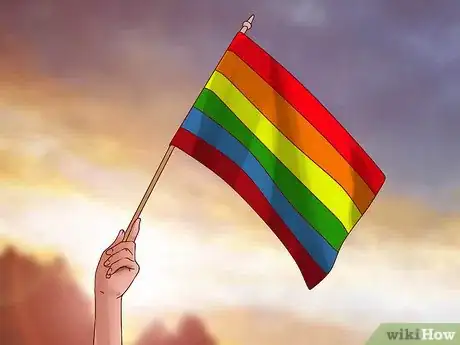
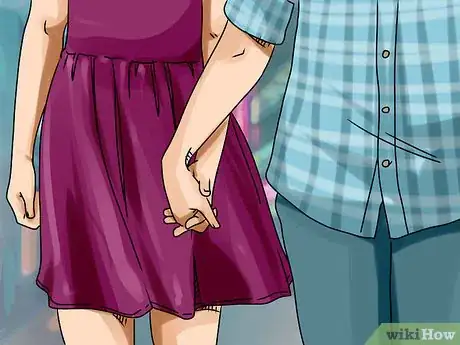
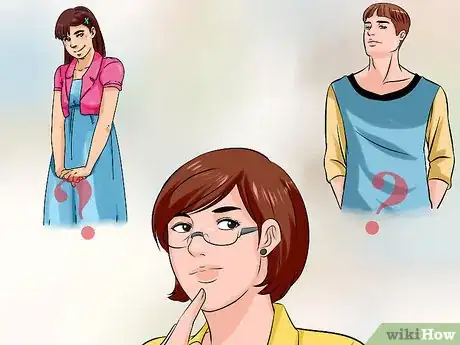

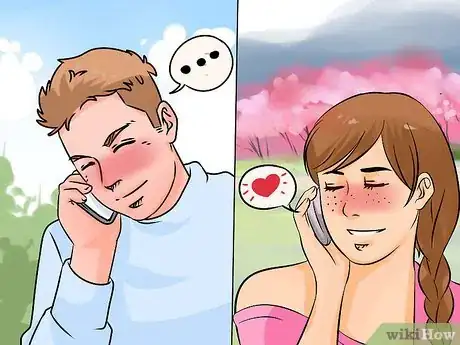


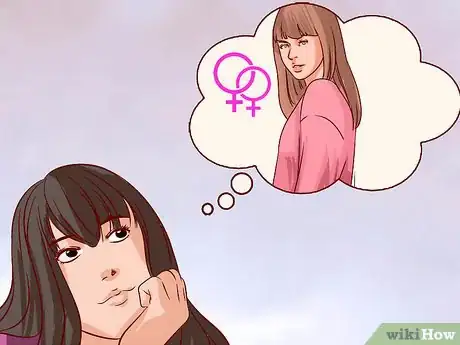
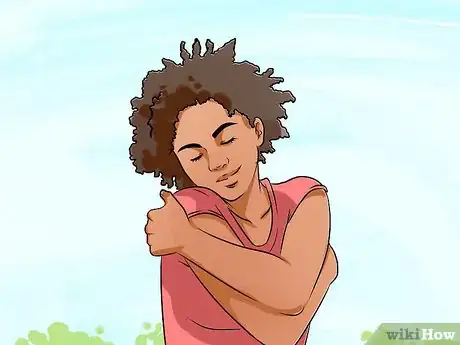
-Step-7-Version-2.webp)
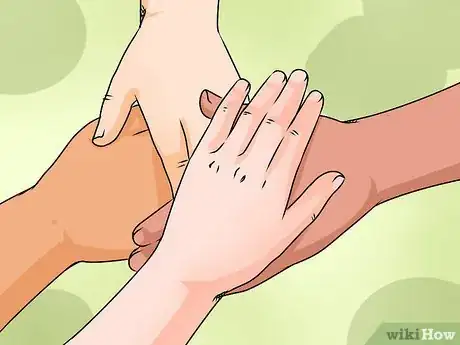
-Step-4-Version-2.webp)
